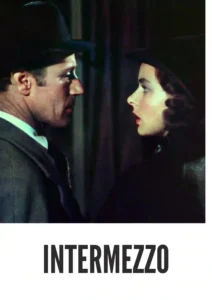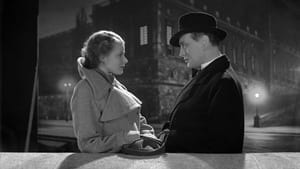Video Sources 0 Views
- Intermezzo 1936 Colorized


Synopsis
Table of Contents
ToggleA Forbidden Love: Intermezzo (1936) in Stunning Color

Step into the emotionally charged world of Intermezzo, a timeless romantic drama from 1936, now beautifully colorized for a captivating viewing experience. Starring Leslie Howard and Ingrid Bergman in her Hollywood debut, this film explores the complexities of love, sacrifice, and artistic passion. Perfect for classic film aficionados and those who appreciate poignant love stories, this HD download brings a beautifully rendered, classic romance to your screen. This film is also known as Intermezzo: A Love Story.
Intermezzo Storyline: When Passion and Duty Collide
Intermezzo tells the story of Holger Brandt (Leslie Howard), a celebrated concert violinist, who finds himself increasingly drawn to Anita Hoffman (Ingrid Bergman), his daughter’s young piano tutor. Their shared love for music ignites a passionate but forbidden romance that threatens to disrupt Holger’s marriage and family life.As their feelings deepen, Holger and Anita must grapple with the moral implications of their relationship. They are torn between their desire to be together and the potential pain their affair could inflict on Holger’s wife, Margit, and their two children. Ultimately, Intermezzo is a deeply moving exploration of love, sacrifice, and the difficult choices we face when passion and duty collide. The film culminates in a poignant resolution that highlights the enduring power of love and the importance of personal integrity.
Movie Cast
The film features a talented cast of actors who bring this emotional story to life:
- Leslie Howard as Holger Brandt
- Ingrid Bergman as Anita Hoffman
- Edna Best as Margit Brandt
- John Halliday as Thomas Stenborg
- Cecilia Parker as Ann Marie Brandt
Movie Genre
Intermezzo falls into the genre of romantic drama, with elements of melodrama and classical romance.
Historical Context
Released in 1936, Intermezzo marked Ingrid Bergman’s Hollywood debut, launching her into international stardom. The film was produced during a time when romantic dramas were highly popular, offering audiences an escape into stories of love, passion, and sacrifice. Intermezzo stands as a testament to the enduring appeal of classic Hollywood romances and the timeless themes they explore.
Colorization Details
This colorized version of Intermezzo has been meticulously restored using modern digital techniques, enhancing the visual appeal while preserving the film’s original emotional depth. The colorization process involved carefully analyzing the grayscale tones of the original black and white footage and assigning appropriate colors to each scene. This painstaking process brings new life to the characters and settings, making the story even more engaging for modern audiences. While some may debate the merits of colorizing classic films, it introduces these films to a broader audience, ensuring their legacy for future generations.
Technical Details
- Director: Gregory Ratoff
- Screenplay: George O’Neil
- Based on: the film Intermezzo (1936) written by Gösta Stevens and Gustav Molander
- Cinematography: Gregg Toland
- Edited by: Francis D. Lyon
- Production Company: Selznick International Pictures
- Distributed by: United Artists
- Runtime: 70 minutes
Technical Specifications
- Download Format: MP4
- Resolution: HD (1080p)
- Compatibility: Compatible with most devices, including smartphones, tablets, computers, and smart TVs.
Reviews and Critical Reception
Intermezzo (1939) is celebrated for its poignant storytelling, stellar performances, and beautiful cinematography. The film’s exploration of love, sacrifice, and personal integrity continues to resonate with audiences today, solidifying its place as a classic of the romantic drama genre.
FAQs
- Q: What is Intermezzo about?
- A: Intermezzo is a romantic drama about a concert violinist who falls in love with his daughter’s piano tutor, leading to a complex and emotional affair.
- Q: Is this version of Intermezzo colorized?
- A: Yes, this version has been professionally colorized to enhance the viewing experience.
- Q: What makes Intermezzo a classic film?
- A: Intermezzo is celebrated for its poignant storytelling, stellar performances, and exploration of timeless themes such as love, sacrifice, and personal integrity.
- Q: What is the download format?
- A: The download format is MP4, which is compatible with most devices.
- Q: What resolution is the download?
- A: The resolution is HD (1080p), providing a high-quality viewing experience.
Download Now in HD!
Watch Intermezzo Today!













